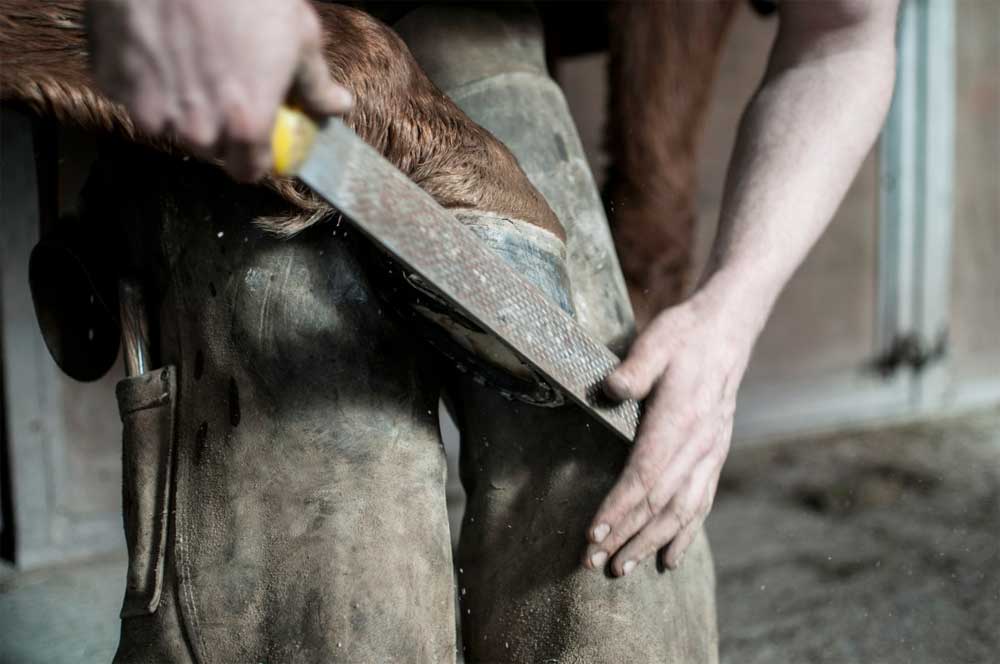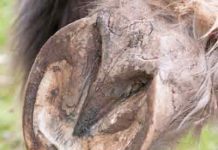Q. My farrier recently recommended that my horse be outfitted on the hind with shoes that have trailers. He suggested this because my horse twists his hind legs a little (one leg more than the other) when he walks out. I’ve been trying to research this, and it seems that trailers have gone out of fashion with farriers. What are your thoughts?

A. Any time a piece of metal is added to the outside or inside of the back of a horseshoe, it is called a trailer. Historically, the objective in adding a trailer to the shoe is to block the hoof from sliding or twisting in the direction of the trailer. Another application for trailers has been to weight one side of the hoof to prevent cross-firing at the canter.
Trailers are no longer commonly applied because they may cause more harm than good. The hoof is unequally weighted when a trailer is applied. A shoe trailer also unequally weights the joints and soft tissue structures of the lower limb, with adverse consequences on future soundness.
Trying to stop the twisting or sliding of the heel is counterproductive to efficient locomotion, and it causes oscillations and vibrations in the hoof that might injure the joints and internal hoof structures. Additionally, the increased traction a shoe trailer offers can create problems such as a sprain or strain if the horse slips because the hoof sticks while the leg keeps moving forward. Plus, a trailer sticking out the side of a shod hoof can lead to disastrous consequences for a horse that might get kicked.
I have found that some horses with twisting hind legs benefit better from a larger surface area or “platform” to weight the limb. This is best accomplished with a full egg bar shoe, so the horse is able to set the entire foot down flat without twisting or sticking as might occur with a trailer.
To prevent interfering, make sure the hooves are balanced, and condition the horse to the task at hand so his muscles are equally developed and strong.
Sometimes it is best to see how well your horse goes when barefoot, and then see if he changes his gait abnormally with shoeing. If he does, then find the simplest way to improve the trim and shoeing rather than making it more complicated with extra metal or hardware.






I have found the full eggbar shoe to be very beneficial on my Walking horses that tend to twist their hind legs. It takes a lot of pressure off the hind limbs,hocks and suspenseries.
I would recommend the barefoot option,my sister’s horse is a standardbred and she has a tendency to over reach and twist her back legs and she seems to do very well bare foot.
My horse had an injury to a tendon and needs the trailer to prevent his hind leg from crossing too far over the other hind leg. He walks great with it, but not without. This article was not helpful at all for people who have vets that actually want us to find them.